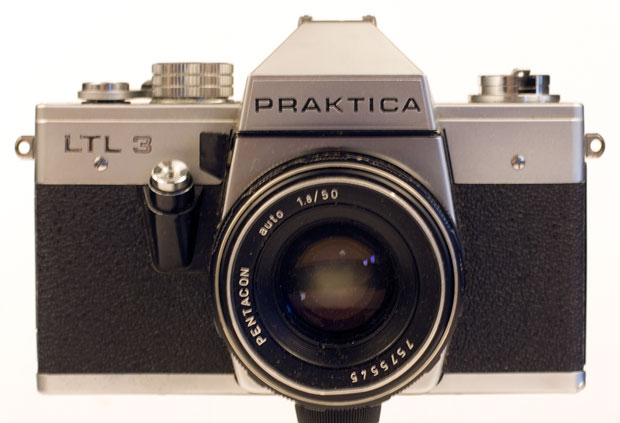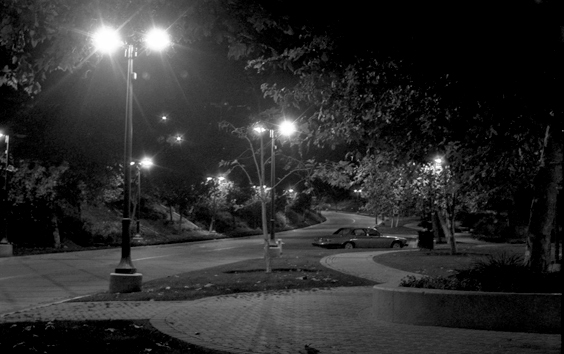
Film type: 35mm
Lens Mount: Pentax/Praktica Universal Screw mount (M42)
Approx. dates of manufacture: 1976-1979
Approx. original price: $189.95
Approx. street value:$50
Paid $5 from it at an online auction, and $11 to have it mailed to me. Go figure.
This is another all-manual, screw-mount camera, the East-German cousin to my Russian Zenit EM. They're a lot alike, even though they're made by completely different companies. They're both about 10 years behind the middle of the pack (they're contemporaries to my Rolleiflex SL35M and Canon AE-1); they both still use the M42 screw mount in a world that was firmly bayonet. At least the Praktica has TTL metering—the Zenit still has a photocell.
But here is the beauty in this beast: even though it takes the discontinued PX 625 mercury battery, it's mechanical and you can still use it. The shutter still fires. The film advances. The only thing that doesn't work properly is the meter. I can either use a hand-held meter (of which I have a couple), or make a guess, or figure out an equivalent for the battery. Regardless, I'm good to go.
.jpg) Oddly, this camera has a similarity to another screw-mount camera, my Miranda Sensorex: it has the shutter button on the front, not on top.
Oddly, this camera has a similarity to another screw-mount camera, my Miranda Sensorex: it has the shutter button on the front, not on top.
Praktica has an interesting pedigree. It was part of legendary Zeiss Ikon, a German maker which dominated the European (and heavily influenced the global) camera market. Zeiss was formed by a merger of several companies and it had factories all over the place, including some in Dresden, and they made a large number of cameras under a variety of different makes, including Zeiss Ikon, Contax, Contessa, and so forth.
After the Second World War, Germany ended up divided into two separate states, West Germany and East Germany, and Zeiss was split between them. There were West German Zeisses and East German ones, and a lot of trademark and brand battles ensued.
One of the Dresden factories became a company called Pentacon, which manufactured a variety of different cameras. It's most widely known was the Praktica line, which managed to get some US distribution through Hanimex. It was Pentacon which began the M42 screw-mount for an early Praktica camera. That mount would become very, very popular in the 1960s.
But Praktica had a similar problem to Zenit and Miranda and a lot of other camera companies: they stayed with screw-mount way too long. This camera was obsolete the day it began production—probably the day it began in design. They were nice student cameras: they're solid and all metal and no-nonsense, and if you treat them decently they last a long time. But they simply couldn't compete against the contemporary Japanese cameras.
Pentacon/Praktica managed the same way Zenit did; by being subsidized by a communist government. When the government collapsed around 1990, so did Pentacon. They're now part of the German company Schneider.
All that said, this is one of my favorite cameras for the simple reason that I took a photo using it that I really like—a photo of my car at night in a parking lot that has a bit of a lonely film-noir look. I, and I am vain enough to think I'm not alone on this, bond with cameras where I get something I really like. So this camera enters a special group, along with my AE-1, Kodak Stereo, my Vito B and a couple others. Just as some other cameras, like my Rolleiflex SL35M, I often think of as disappointments.

Camera manual: Orphan Cameras.com


